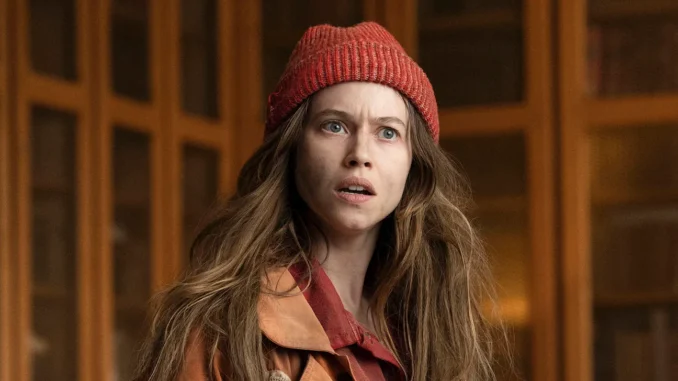
By Rob Feld
Coming off the success of “The Marvelous Mrs. Maisel,” editors Tim Streeto and Zana Bochar found themselves in familiar company but brand-new territory with “Étoile,” the latest series from Amy Sherman-Palladino and Daniel Palladino. A tale of two cities, Paris and New York, “Étoile” is a comedy-drama about two ballet companies’ struggles to survive.
For Streeto, the shift in tone and structure was immediately clear. “Maisel” had tracked a character’s rise in as her world expanded; “Étoile” dropped viewers into a world already at its peak. Logistically, too, the project was a departure: the latter series shot out of order across two countries, with scenes trickling in over months due to the dual-city schedule, the writers’ strike, and even the impending Paris Olympics. “It was massively cross-boarded—very different from ‘Maisel,’ where we shot one episode at a time,” Streeto said.
For Bochar, “Étoile” marked her first full editor credit—a major leap that was made easier by returning to a trusted creative team. “It was the best possible scenario,” she said. “I already knew how they work, and they knew me.” Despite the pressure of a new series and a fragmented post pipeline, the continuity of working with Amy and Daniel helped both editors zero in on the show’s tone early. A sense of homecoming helped, too. At the first table read, Bochar said it felt like “coming back to school as a new senior after all of last year’s seniors had graduated.” That emotional and professional comfort zone became the ideal launchpad for a series that demanded precision, energy, and an editorial rhythm all its own.
At the heart of the series is Jack McMillan (Luke Kirby), a sharp-tongued, pragmatic artistic director from New York, whose bold vision clashes and aligns with that of Geneviève Lavigne (Charlotte Gainsbourg), the elegant but guarded French director navigating her own pressures and traditions. Caught between them is rising star Cheyenne Toussaint (Lou de Laâge), a gifted but difficult dancer whose journey becomes the emotional center of the series as she balances ambition, identity, and the demands of two worlds.
CineMontage: Tell me about establishing the voice as you were waiting for major pieces of footage to come to you?
Tim Streeto: They were shooting out of sequence. The first thing they shot was a scene for episode one—Jack in his office, getting [a] bad New York Times review, and then the scene with Cheyenne. That felt like a good starting point. Luke Kirby, who we knew from “Maisel,” jumped right into the rhythm. The dancing was the big difference. Once we started getting rehearsal and performance footage, it was pretty extraordinary. Dancers can’t do 50 takes—it’s too physical—so a lot of the choreography had to be worked out in advance. There was a lot of staging and planning. And then there was the French. Our script supervisors were amazing and really helpful moving forward.

CineMontage: Had you cut dance before? What was your prep or process?
Streeto: I have cut dance before, and what I’ve found helpful is asking script supervisors to note what the choreographer says on set. I feel confident judging acting and camera work, but I don’t always catch the nuances—a missed footfall, a subtle adjustment. What looks good to me might not be what the dancers or choreographer prefer. Amy also danced for many years, so she has a sharp eye. In the cutting room, she’d say, “Does it bother you that he did this?” And I’d go, “I didn’t even notice.” A lot of it was shot to play in full—you don’t want to build the dance entirely through editing. They did shoot extra pieces, like Steadicam shots or audience perspectives, but those were very specific. The sequences were almost like IKEA furniture—you can only put them together one way.
Zana Bochar: I’d never cut dance before, so it was a totally new experience for me. Like Tim said, the script notes were crucial—things like “this take is great until here,” then “use that part from another take.” I leaned a lot on our apprentice, Kristi Palmer. She spoke French, had a ballet background, and helped decode notes like, “It’s good until the jeté.”
Streeto: Once we were deep into a scene, we used a lot of the usual cheats. They often shot long dance sequences so the choreography could play out in full, but we trimmed those down with cutaways—to the audience, to Jack watching—just to shape the pacing. To your earlier question, one thing I really appreciated, and we felt this at the premiere, was that the show gives you moments where the talking stops and you can just breathe and watch something beautiful. That’s rare, and very different from “Maisel,” where the dialogue is almost athletic. It was really effective.
CineMontage: How was it to work with CG to replace the dancers’ faces with those of the actors?
Streeto: We had some real ballet dancers who are big names in the ballet world. They did well on the acting side, too. For the leads, like Gabin and Cheyenne, we used doubles and did some face replacement. That was all carefully choreographed and shot with that in mind. Our VFX supervisor, Leslie Robson Foster, was always on set. The challenge was that we had to lock certain scenes early to start the visual effects work, but we didn’t have full episodes yet. Amy and Daniel like to see things in context, so that made it tough. Cheyenne’s big performance in the final episode was shot months before we even had the full script, so I had to cut that sequence and get Amy’s sign-off just to get VFX going.
CineMontage: Was there a scene or moment that really defined the show for you—something where once it locked, you understood what the show was?
Bochar: For me, episode two, which was my first episode, had this transatlantic press conference—New York and Paris characters all in one sequence. It cuts back and forth, then Crispin butts in, Pink’s audio comes through, and then we jump to a farm stand upstate. So many moving parts—tons of coverage, overlapping dialogue, Jack and Geneviève on a call while others are talking. It was massive. I got the Paris footage in May, New York in August, and the upstate farm stand—shot in Paris—in October. It didn’t come together until the end, but it encapsulated the scope of the whole show. That was when I realized just how big this thing was.
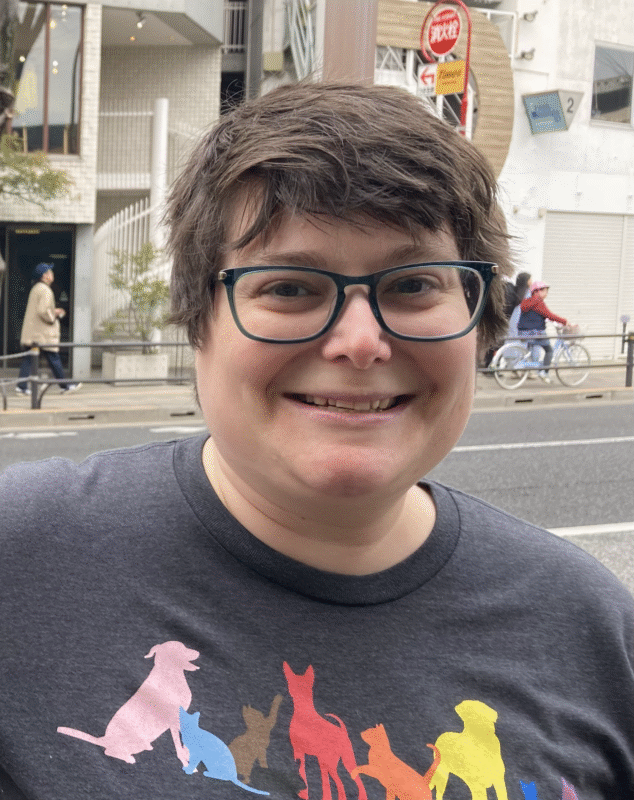
Streeto: For me, the scene that stands out is in the first episode—the swap negotiation around the conference table. They’d name a dancer, and we’d cut to a stunning performance from Antoine Guillaume or another dancer in this fantasy stage space, like something out of “On the Town.” The comedy builds as Geneviève keeps agreeing to Jack’s requests before he even finishes. Then he says Harmony’s name, and Geneviève agrees before Harmony even gets to speak. That moment crystallized the show for me—it’s Amy and Daniel’s style of comedy, but with this extraordinary beauty layered into it. That scene sets up the entire premise of the show. I think I had Harmony’s performance footage first, shot in Paris, and then later got the full conference table scene, which was more traditional coverage—Amy’s least favorite kind of setup. She hates static shots of people sitting and talking. The dance let us break out of that and bring energy to the scene. That’s when I really understood what made the show special. Then in the final episode, the scene where Tobias starts choreographing his piece—cutting between the audience, the stage, and the crowd gathering outside—that was all built in the edit. Deciding how much time to spend with each group, building momentum with sound and pacing. That sequence felt like the apex of everything we were trying to do.
CineMontage: It seems deceptively complex—dance, comedy, multiple locations shot out of sequence …
Bochar: It definitely felt that way, especially in the way it was shot. We’d get half of six episodes, then the other half—minus a few scenes—then half of two episodes, then the rest. It was very disjointed. And it started with all the Paris footage, so everything was in French at first, except for Jack’s office, which is set in New York but was shot in Paris. We had scene boards with color coding just to keep track of everything.
Streeto: In terms of tone, I don’t think Amy and Daniel think in terms of “comedy” or “drama.” They’re influenced by what they love. I remember talking to Amy about “The Sopranos”—it’s considered a drama, but it’s also really funny. “Maisel” was like that too. It was an hour-long show with a lot of comedy—more old-school, with punchlines, because it was about comedians. But it had serious, emotional moments too. They’re just really good writers. They can weave between tones effortlessly—there’s tragedy in comedy, and comedy in tragedy.
CineMontage: What was your true north for keeping the story tight and moving? What was the one thing you had to make sure the audience stayed focused on, no matter what else?
Bochar: The dance. When we started getting the dance dailies, it was incredible. I’ve seen ballet, but not often—and seeing it like this, watching dancers do take after take and still delivering these extraordinary performances, it blew me away. By the 18th take they’d finally start getting tired. What they do is just incredible, and Amy really wanted to highlight that because she respects dance so much. That became the anchor: the audience should just sit back and watch them dance.
Streeto: Absolutely. For me, it was also the characters—especially the core cast. Once I had a couple of scenes with Jack, and saw what Luke Kirby was doing, I knew we had something. It was a different role for him than in “Maisel,” and he was just so good. I think all editors feel a kinship with the actors—you want to do right by them and show them in the best light when they’re delivering great work. Same with Charlotte and Lou. When their performances started coming together, that was my guide: if the audience connects with these characters, we’re good. Even if the audience isn’t made up of ballet fans, they can still connect with the characters as people—running a business, dealing with coworkers, managing conflict. It’s an office drama inside an artistic institution. The fun is in watching Cheyenne ignore Jack’s directives or navigate bureaucracy with the Minister of Culture in France. That’s the heart of it. If people bond with the characters, we’ve done our job.



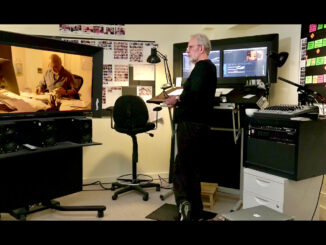
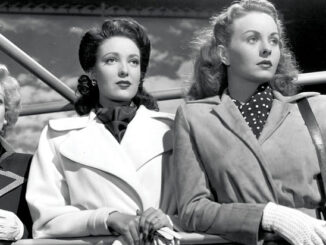
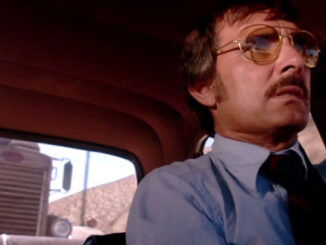

Be the first to comment